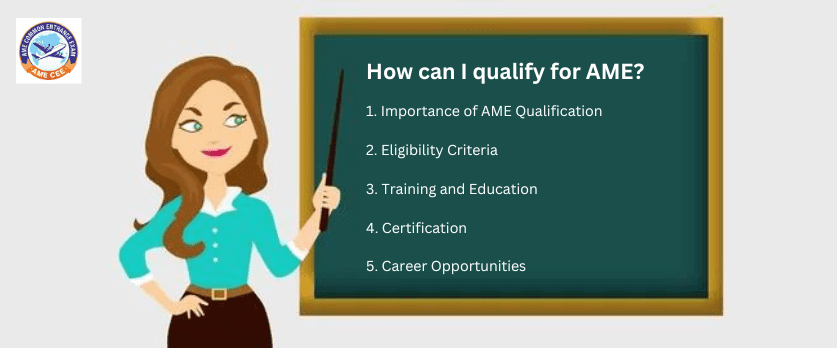Introduction
Aircraft Maintenance Engineering (AME) is a crucial profession ensuring the safety and airworthiness of aircraft. This qualification is essential for individuals aspiring to work in the aviation industry, specifically in aircraft maintenance.
Importance of AME Qualification
Obtaining an AME qualification is vital for those aiming to play a pivotal role in ensuring the proper functioning and safety of aircraft. This qualification opens doors to a range of opportunities in the aviation sector.
Key Details
Eligibility Criteria
| Eligibility | Description |
| Educational Background | Typically, 10+2 with Physics, Chemistry, and Mathematics. |
| Age Limit | 16 years is the age restrictions for eligibility at the time of admission. |
| Medical Fitness | Candidates often need to meet certain medical standards. |
| Language Proficiency | Proficiency in English may be required for international programs. |
Training and Education
AME training involves both theoretical and practical aspects. Candidates undergo rigorous training programs covering aircraft systems, regulations, and maintenance procedures. Practical experience is gained through hands-on work on actual aircraft.
Certification
Upon completing the required training, candidates must pass examinations conducted by aviation authorities to obtain the AME license or certification. This certification authorizes them to perform aircraft maintenance.
Career Opportunities
An AME qualification opens doors to diverse career opportunities, including positions in airlines, aircraft manufacturing companies, and maintenance, repair, and overhaul (MRO) facilities. AMEs may specialize in specific types of aircraft or systems.
FAQs
Q1. What is the duration of AME training?
A. The duration varies but typically ranges from 2 to 5 years, depending on the country and the specific program.
Q2. Is a degree required for AME qualification?
A. No, a degree is not always required. The minimum educational requirement is usually a 10+2 with a science background.
Q3. How often do AMEs need to renew their certifications?
A. Certification renewal requirements vary, but AMEs often need to undergo periodic training and demonstrate continued competence.
Q4. Can international students pursue AME training?
A. Yes, many countries welcome international students for AME training programs. However, visa requirements and eligibility criteria may apply.
Q5. What are the key responsibilities of an AME?
A. AMEs are responsible for inspecting, repairing, and maintaining aircraft to ensure they meet safety standards and regulatory requirements.
Q6. Are there specialized areas within AME qualification?
A. Yes, AMEs can specialize in areas such as avionics, airframe, or powerplant maintenance.
Q7. How does AME training incorporate practical experience?
A. Practical experience is gained through hands-on work on aircraft during on-the-job training and apprenticeships.
Q8. What is the role of AMEs in aviation safety?
A. AMEs play a critical role in ensuring the safety and airworthiness of aircraft by conducting thorough inspections and maintenance.
Q9. Can AMEs work internationally?
A. Yes, AMEs with appropriate certifications may have opportunities to work internationally in the aviation industry.
Q10. Are there ongoing professional development requirements for AMEs?
A. Yes, AMEs often need to engage in continuous learning and stay updated on advancements in aircraft technology and regulations.
In conclusion, pursuing an AME qualification is a gateway to a challenging and rewarding career in the aviation industry, offering a wide array of opportunities for individuals passionate about aircraft maintenance and safety.
To become an aircraft maintenance engineer you may could join AME engineering through AME COMMON ENTRANCE EXAM (AME CEE) this examination you may join AME engineering approved by DGCA, EASA or UGC.


